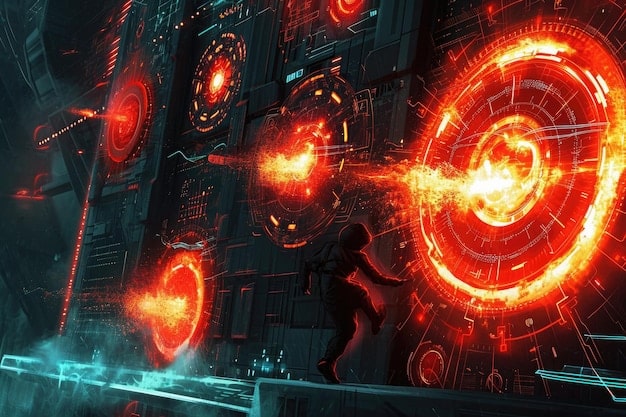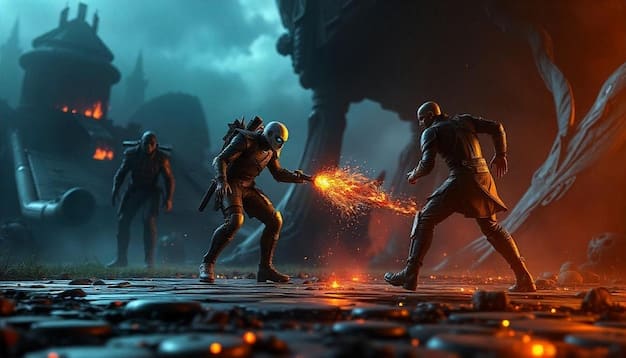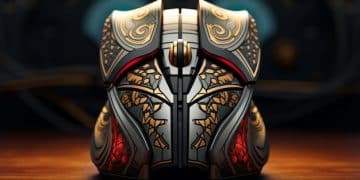14.25 Patch Nerfs: Marksman Win Rates & Meta Impact Explored

The 14.25 patch nerfs are anticipated to significantly reduce the win rates of several key marksman champions, potentially shifting the current meta towards more resilient or utility-focused alternatives due to diminished damage output and survivability.
The landscape of League of Legends is constantly evolving, with each new patch bringing a wave of changes that can reshape competitive play and casual matches alike. The impending 14.25 patch is no exception, and the community is buzzing with speculation about how will the 14.25 patch nerfs impact win rates for marksman champions in the current meta. These changes, often designed to balance power dynamics, can have profound effects on champion viability, leading to shifts in tier lists and preferred strategies. As a journalist tracking these developments, my aim is to delve beyond surface-level observations and provide an in-depth analysis of what these nerfs truly signify for the marksman role.
Understanding the 14.25 Patch Nerfs
The 14.25 patch introduces a series of targeted adjustments aimed at specific marksman champions, as well as broader item and system changes that indirectly affect the role. These nerfs are not arbitrary; they emerge from a continuous data analysis process by Riot Games, seeking to address champions or strategies that have become overly dominant, creating an imbalance in the game. The goal is typically to foster diverse champion selections and prevent stagnation in the meta.
When we talk about nerfs, we are typically referring to reductions in base stats, scaling ratios, ability damage, cooldowns, or even the effectiveness of core item builds. For marksman champions, even minor adjustments can have a ripple effect. A slight reduction in attack damage (AD) scaling on an ability, for instance, might not seem significant in isolation, but when combined with a slower item progression or increased mana costs, it can markedly decrease a champion’s overall damage output and burst potential at critical stages of the game.
Key Nerfs Targeting Marksman Champions
Several marksman champions, who have recently enjoyed high win rates or pick-ban priority, are directly in the crosshairs of patch 14.25. These adjustments are designed to reduce their overwhelming presence and give other champions a fairer chance to shine. It’s crucial to examine the specific nature of these nerfs, as they dictate the direct impact on each champion’s power budget.
- Ashe: Reduced base attack damage and lower critical strike damage modifier on her Q ability, Volley.
- Jinx: Increased mana cost on her Rocket Form, making sustained rocket damage more challenging without mana regeneration items.
- Caitlyn: Reduced base attack speed growth and a slight reduction in her ultimate’s base damage at earlier ranks.
These nerfs often aim to increase counterplay opportunities or to delay a champion’s power spike, forcing players to adapt their playstyle or itemization. For instance, reduced base AD makes early game last-hitting and trading more difficult, while higher mana costs can punish aggressive ability usage.
Indirect Nerfs Through Item Adjustments
Beyond direct champion changes, many marksman champions are heavily reliant on specific item builds. Patch 14.25 also includes adjustments to several core marksman items, which can function as indirect nerfs by reducing their overall efficiency or power. These changes are often more subtle but can have a widespread impact across the entire role.
Consider the changes to critical strike items or specific AD components. If an item that provides a significant power spike to a marksman is made less efficient—perhaps by increasing its cost, reducing its stats, or altering its unique passive—then every champion that builds that item feels the effect. This forces marksman players to re-evaluate their build paths, potentially delaying their primary damage sources or opting for less optimal alternatives.
Understanding the interplay between direct champion nerfs and indirect item nerfs is crucial for predicting the broader meta shifts. A champion might not be directly nerfed, but if their optimal build path is weakened, their effectiveness will inevitably decline.
Projected Impact on Marksman Win Rates
Predicting the exact percentage drop in win rates is an inexact science, as myriad factors influence game outcomes. However, based on historical patterns and the nature of the pending changes in the 14.25 patch, we can make educated projections regarding the likely impact on marksman champions’ win rates. The key is to consider how these nerfs interact with different game stages and player skill levels.
Typically, nerfs targeting early game strength, such as reduced base stats or higher mana costs, tend to have a more pronounced impact on lower ELOs where lane dominance can snowball heavily. Conversely, nerfs affecting late-game scaling or critical items might be felt more acutely in higher ELOs and professional play, where games often extend and item builds are optimized for maximum power.
Analysis of Targeted Marksmen
The champions directly affected by the 14.25 nerfs are likely to experience immediate declines in their win rates. The extent of this decline will largely depend on the severity of the nerfs and the champion’s reliance on the specific attributes being targeted. For example, a champion heavily reliant on their early game AD to secure leads might see a steeper drop if their base AD is significantly reduced.
- Ashe: With reductions to both base AD and critical strike modifiers, Ashe’s early game trading power and mid-game burst potential will be noticeably diminished. We can expect a mid to high single-digit percentage drop in her win rate, especially in solo queue.
- Jinx: The increased mana cost on her Q, Rocket Form, forces Jinx players to manage their mana more carefully. This could lead to fewer opportunities for sustained teamfight damage or wave clear, resulting in a slight win rate decrease, particularly in extended engagements.
- Caitlyn: A slower base attack speed growth makes Caitlyn’s early game more passive, while reduced ultimate damage lessens her ability to pick off low-health targets across the map. Her win rate might see a moderate dip, pushing her out of her current S-tier standing.
These projections are based on the assumption that players will initially continue their established playstyles. As players adapt, identifying new build paths or strategies, some of these champions might stabilize, but an immediate dip is almost guaranteed.
Broader Role-Wide Implications
The indirect nerfs, particularly those affecting critical items or general AD components, will likely impact a wider range of marksman champions, even those not directly targeted. Champions who previously thrived on aggressive early itemization or specific critical strike thresholds will now find themselves needing more resources or time to reach similar power levels. This can lead to a general reduction in the overall strength of the marksman role, making them slightly less influential compared to other roles in the early to mid-game.
The goal of such broad changes is often to prevent the marksman role from becoming too dominant, ensuring that other damage sources and roles have equal opportunities to shine. This could also open the door for more unique build paths or champions that rely less on standardized critical strike items, promoting greater diversity within the marksman pool.
Shifting Meta: Emerging Picks and Strategies
Every set of nerfs inherently creates opportunities for other champions and strategies to rise. As certain marksman champions become less dominant due to the 14.25 patch nerfs, the meta will inevitably shift, favoring those who are either unaffected or indirectly buffed by these changes. This creates an exciting period of experimentation and adaptation within the League of Legends community, as players seek out the next optimal picks and strategies.
The vacuum left by the weakened marksmen will likely be filled by champions who offer different strengths: perhaps higher utility, stronger early game presence, or more resilient late-game scaling that isn’t as reliant on now-nerfed items. This encourages a dynamic re-evaluation of the marksman role’s core purpose and desired impact within a team composition.
The Rise of Utility and Resilience
With direct damage-focused marksmen taking a hit, we can expect a resurgence of marksman champions who bring significant utility or have inherent resilience. These champions contribute to their team’s success not just through raw damage, but also through crowd control, shielding, or superior self-peel mechanisms. Their value proposition becomes stronger when the pure damage output of their counterparts is diminished.
- Varus: His exceptional poke and ultimate (Chain of Corruption) provide strong teamfight initiation and zoning, making him valuable even with slightly less personal damage.
- Sivir: Her Spell Shield offers incredible self-peel, and her ultimate (On The Hunt) provides team-wide utility, making her safe and impactful.
- Ezreal: His highly mobile kit and ability to build more defensively with items like Iceborn Gauntlet allow him to maintain relevance in a less damage-centric meta.
These champions excel at contributing to fights in ways that transcend raw AD output, making them excellent choices when the traditional carry role is slightly weaker. Their ability to survive longer or provide crucial crowd control can swing teamfights even if their damage per second (DPS) is not top-tier.

New Itemization Paths and Strategic Adaptations
The indirect item nerfs will force marksman players to explore alternative itemization paths. This might mean prioritizing items that offer more defensive stats, earlier power spikes through cheaper components, or unique passives that provide utility rather than just raw damage. Such adaptations are crucial for staying competitive and can lead to innovative build strategies that redefine “optimal” for the role.
For example, if critical strike items become less efficient, marksmen might lean into on-hit builds more heavily, or explore items that offer greater attack speed and utility. This shift could empower champions like Kog’Maw or Vayne, who benefit immensely from on-hit effects and can shred through tanks even with less traditional AD builds. Teams might also adapt their compositions to provide more peel for their marksman, recognizing that their carries might be more vulnerable or take longer to scale.
These adjustments are not just about individual champions; they are about understanding the entire ecosystem of the game. A shift in one area inevitably causes ripples throughout the rest, opening up new tactical considerations for players and teams.
Statistical Analysis and Data Interpretation
To accurately gauge the impact of the 14.25 patch nerfs, a thorough statistical analysis is indispensable. Raw win rate numbers tell only part of the story; it’s essential to look at pick rates, ban rates, and performance across different tiers of play. Data gathered from millions of games provides the empirical evidence needed to confirm or refute initial projections and understand the nuances of meta shifts.
Post-patch data collection involves monitoring these metrics closely in the days following the patch release. Fluctuations are common, and it typically takes several days to a week for the meta to stabilize and for true trends to emerge. This period of observation allows analysts to distinguish between immediate player reactions and sustained meta shifts.
Monitoring Win Rate Trends
After the 14.25 patch goes live, the immediate focus will be on monitoring the win rates of the affected marksman champions. A significant drop within the first 24-48 hours is a strong indicator that the nerfs have had their intended effect. However, it’s also important to track these numbers over a longer period, as players often adapt to changes, potentially mitigating some of the initial impact. A sustained dip over a week or two would confirm a fundamental shift in power.
Moreover, comparing win rates across different competitive tiers—from Bronze to Challenger, and even professional play—offers a more comprehensive view. A champion might see a steep decline in lower ELOs but remain relatively stable in higher ELOs where players are more adept at optimizing less powerful kits or adapting their strategies.
Analyzing Pick and Ban Rates
Win rate is a crucial metric, but pick and ban rates complement it by indicating a champion’s perceived strength and popularity. If a champion’s win rate drops, but their pick rate remains high, it suggests that players might still perceive them as strong, or are simply slow to adapt. Conversely, a sharp drop in both pick and win rates signals a significant fall from grace.
Ban rates are also highly indicative. A champion that was frequently banned pre-patch, but sees their ban rate plummet post-patch, signifies that other players no longer perceive them as an overwhelming threat. This holistic view of pick, ban, and win rates provides a more robust understanding of the actual impact of the nerfs than any single metric alone.
This data-driven approach helps to move beyond anecdotal evidence and provide concrete insights into the evolving meta. It allows us to track not just what is happening, but also to understand why, paving the way for informed strategic decisions.
Player Adaptation and Community Reaction
The human element of League of Legends cannot be overstated. Player adaptation and community reaction play a significant role in how patch nerfs ultimately shape the meta. While raw numbers provide objective data, the collective choices of millions of players—from pro-gamers to casual enthusiasts—determine the speed and direction of meta shifts. The 14.25 patch nerfs will undoubtedly spark extensive discussion, experimentation, and eventual consensus within the community.
Often, players will initially resist changes, attempting to make their favored champions work despite the nerfs. However, as losses mount, they become more open to exploring new options. This iterative process of trying, failing, and adapting is fundamental to how metas evolve. Streamers, content creators, and professional players often act as trailblazers, showcasing new strategies that ripple through the broader player base.
Impact on Pro Play and High ELO
Professional play and high ELO environments are typically the first to adapt to significant patch changes. These players and teams have the resources and motivations to quickly identify optimal strategies and champions. The 14.25 nerfs will force professional marksman players to re-evaluate their champion pools and scrimmages will reveal the true impact of these changes in highly coordinated settings. We can expect to see certain champions disappear from competitive drafts almost immediately, while others may emerge as surprising strong picks.
The speed of adaptation in high ELO can often predict broader meta trends. If a particular marksman or build path proves highly effective in Challenger, it’s often only a matter of time before that strategy becomes popularized in solo queue. Professional tournaments following the patch will be crucial battlegrounds for testing these new meta developments.
Community Sentiment and Feedback
The League of Legends community is highly vocal, and patch changes always generate significant discussion on forums, social media, and streaming platforms. Initially, there might be frustration among players whose favorite champions have been nerfed. However, as the meta evolves, the focus typically shifts to discovering new strong picks and optimizing alternative strategies. This collective brainstorming is an invaluable part of the game’s dynamic ecosystem.

Riot Games also closely monitors community feedback, often using it to inform future balancing decisions. While direct feedback doesn’t always translate into immediate changes, it contributes to the ongoing dialogue about game health and balance. The 14.25 nerfs will test the community’s adaptability and willingness to embrace new challenges, shaping the narrative around the marksman role for the foreseeable future.
Long-Term Outlook for Marksman Champions
While the immediate impact of the 14.25 patch nerfs on marksman win rates will be a primary focus, it’s equally important to consider the long-term outlook for the role. These changes are seldom isolated events; they are part of a continuous process of balancing and evolving the game. Understanding the trajectory of the marksman role involves looking beyond the current patch and considering the broader design philosophy underpinning these adjustments.
Riot Games often aims for a dynamic meta where no single role or champion archetype remains dominant for too long. If the marksman role becomes too weak after 14.25, it’s plausible that future patches will introduce buffs, new items, or system changes to bring them back into balance. This cyclical nature of balancing ensures the game remains fresh and engaging.
Future Adjustments and Meta Stability
The 14.25 nerfs are unlikely to be the final word on marksman balance. If certain champions fall too far behind, or if other roles become overwhelmingly powerful in comparison, subsequent mini-patches or full patches will likely address these imbalances. The goal is to achieve a meta where all roles feel impactful and where diverse champion pools are viable.
Meta stability is a fluid concept. A completely stable meta often implies stagnation, where the same champions and strategies are played repeatedly. Instead, Riot aims for a meta that continuously evolves at a manageable pace, encouraging player growth and strategic depth. The 14.25 nerfs contribute to this ongoing evolution, shaking up established norms and paving the way for new discoveries.
The Evolving Identity of the Marksman Role
Over the years, the marksman role has seen various identities—from being the absolute late-game hyper-carry to a more utility-focused, early-game presence. The 14.25 nerfs might push the role towards a specific identity for a period, perhaps emphasizing safer, utility-oriented picks over raw damage. This provides opportunities for players to master different facets of the marksman playstyle.
Ultimately, the long-term health of the marksman role depends on its ability to offer diverse and engaging gameplay, contributing meaningfully to team compositions without being overtly oppressive. The 14.25 patch is another chapter in this ongoing narrative, and its full implications will unfold over the coming weeks and months, shaping the way we perceive and play the role.
| Key Point | Brief Description |
|---|---|
| 📉 Nerf Impact | Direct and indirect nerfs will lower affected marksman win rates and overall role strength. |
| 🔄 Meta Shift | Expect a shift towards utility-focused and resilient marksman champions. |
| 📊 Data Analysis | Win, pick, and ban rates post-patch will confirm balance changes and new trends. |
| 💡 Player Adaptation | Players will adapt by exploring new builds and alternative champion picks. |
Frequently Asked Questions About 14.25 Marksman Nerfs
Champions like Ashe, Jinx, and Caitlyn are directly targeted by nerfs in patch 14.25. Ashe receives base AD and critical strike modifiers reductions, Jinx has increased mana costs on her Rocket Form, and Caitlyn sees reduced base attack speed growth and ultimate damage. These changes aim to diminish their current dominance.
No, the nerfs are designed to balance power, not to make champions unplayable. While some marksmen will see reduced win rates, players will adapt by exploring new strategies, item builds, and alternative champions. The goal is to encourage a more diverse meta where different marksmen can thrive.
Beyond direct champion nerfs, adjustments to core marksman items will have indirect impacts. If critical strike items or general AD components become less efficient, all marksmen relying on them will be affected. This could lead to a shift towards on-hit builds or more utility-focused item paths to compensate for diminished raw damage.
Champions that offer high utility, self-peel, or are less reliant on raw damage numbers might see increased viability. Examples include Varus (due to poke and crowd control), Sivir (for her Spell Shield and team utility), and Ezreal (for his mobility and flexible build options). Resilience and non-damage contributions will be more valued.
Meta shifts typically begin immediately after a patch release, but a stable new meta usually takes several days to a week to form. High ELO players and professional teams quickly identify optimal strategies, which then trickle down to the broader player base. Data collection during this period provides key insights into ongoing trends.
Conclusion
The 14.25 patch nerfs are set to bring significant changes to the marksman role in League of Legends, promising a shake-up in win rates and meta dominance. While traditional powerhouses like Ashe, Jinx, and Caitlyn are likely to see their influence wane, this creates fertile ground for other marksmen—particularly those focused on utility and resilience—to emerge. The adaptations by players and data analysis in the weeks following the patch will paint a clearer picture of the new meta, reinforcing the dynamic and ever-evolving nature of Summoner’s Rift. As always, embracing change and experimenting with new strategies will be key to thriving in the post-14.25 landscape.





